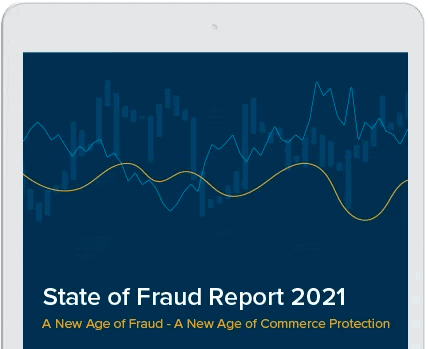The debate over whether sustainable clothing is a passing fad or a crucial segment for fashion and clothing retailers is pretty much over.
The category has turned into a high-performance engine for online apparel sales, soaring 74% year-over-year in 2021, according to Signifyd Ecommerce Pulse data. By comparison, the increase in online sales of clothing other than sustainable apparel topped out at 25% for the year.
Moreover, the sustainable category gained momentum in the crucial fourth quarter, nearing a triple-digit-percent increase and remained strong during the beginning of the new year. In January and February, ecommerce sales increased 34% and 47% respectively. Sales of all other apparel increased 9% year-over-year in each of the first two months of the year.
- Online sales of sustainable apparel was up 74% in 2021, far outstripping the growth of non-sustainable sales, according to Signifyd Pulse data.
- While sustainability appears to be a key driver behind consumer purchases, their motivation is not a simple matter.
- Retailers and their customers appear to have a disconnect when it comes to understanding the importance of sustainability in purchase decisions.
While the issue of sustainable retail has been kicked around for years, some retailers remained skeptical about consumers’ commitment to the movement, compared to their appetite for bargains and their loyalty to certain brands.
Sustainable clothing is the latest fashion
But there is growing evidence that retailers who ignore consumers’ increasing interest in retailers’ commitment to social and environmental causes do so at their own peril. Choose your cliche — whether consumers are voting with their wallets, putting their money where their mouths are, etc. — the data clearly shows that sustainable apparel is the latest fashion.
Signifyd data analyst Phelim Killough analyzed the sales on Signifyd’s Commerce Network of apparel items with sustainability-focused words in their names. Online spending on clothing labeled with terms like “sustainable,” “biodegradable,” the prefix “eco-,” etc., sold at a rapid clip throughout 2021.
Killough found the growth in those sales peaked in March 2021, soaring 169% above where they were in March 2020. Such sales remained robust through the summer, flirting with and doubling the year-before sales figures. Sales of sustainable apparel hit 94% year-over-year growth at the peak of the holiday shopping season, before tailing off in December.
Research by First Insights and the University of Pennsylvania’s Wharton School included findings that support what Signifyd’s data shows. Titled “Consumer Expectations for Sustainable Retail — and Retail Executive Disconnects,” the research found that consumers’ willingness to pay more for sustainable products increased dramatically between 2019 and 2021 — not coincidentally a before-and-after-the-beginning-of-the-pandemic snapshot.
In 2019, 58% of respondents said they’d pay more for a product that was “sustainable” than for one that was not classified as such. In 2021, that figure increased to 68%. When researchers asked if they’d be willing to pay at least 10% more and then broke the responses out by age group, the findings were even more striking.
Consumers’ willingness to pay for sustainable products is on the rise
The percentage of Baby Boomers willing to pay a premium of 10% or more shot up from 23% pre-pandemic to 76% last year. Similarly, Gen X increased from 34% to 88%. Millenials’ and Gen Zs’ willingness increased by 36 and 27 percentage points respectively.
But as the title for the First Insights/Wharton School analysis implies, researchers also made a puzzling discovery. While consumers said they were ready to open their wallets, purses and bank accounts wide in pursuit of sustainable products, retailer respondents indicated that they didn’t think consumers were ready to pay more.
While 68% of consumers in 2021 said they were willing to pay a premium for sustainable products, only 34% of retail executives surveyed believed shoppers would pay more. The disconnect might lie in a misunderstanding of sustainability-seeking consumers.
While it’s reasonable to assume sustainability-focused consumers wanted to do what’s right, their survey responses indicate that there is more to it. While helping the environment was an important motivating factor for buyers of sustainable clothing, the belief that sustainable products tend to be better quality than non-sustainable products ranked higher or just slightly lower than the environment, depending on the age group.
Consumers like the high-quality of sustainable products
Gen X, Millennials and Gen Zs all ranked better quality as a more important factor than the environment in their decision to shop for sustainable products. Only Baby Boomers ranked the environment ahead of high quality (23% to 13%).
Obviously, plenty of retailers get it. Brands like Patagonia have been talking about and acting on sustainability for years. Merchants such as Rothy’s, Allbirds, Rent the Runway, threadUp and others have business plans heavily influenced by sustainability.
But for merchants who haven’t seized on the potential of sustainability, current trends present a big opportunity for retailers. For those who thought consumers wouldn’t pay more for sustainable products — including apparel — they now have evidence that they could realize a return in the form of higher margins on more expensive inventory.
And when it comes to marketing and messaging, they might want to be sure they are including the high-quality of their sustainable products as a selling point, along with the good buyers would be doing for the planet.
After all, whatever the reason consumers are buying sustainable clothes at rates approaching and eclipsing twice as much as they were in 2020, there is no denying the category’s popularity.
Clearly, sustainable clothing is good for the environment and good for business.
Photo by Getty Images









